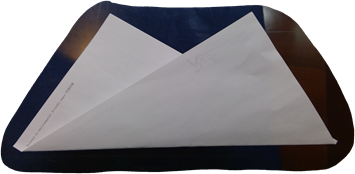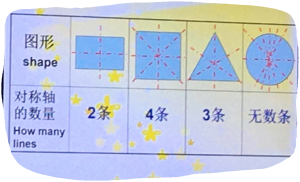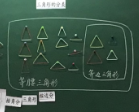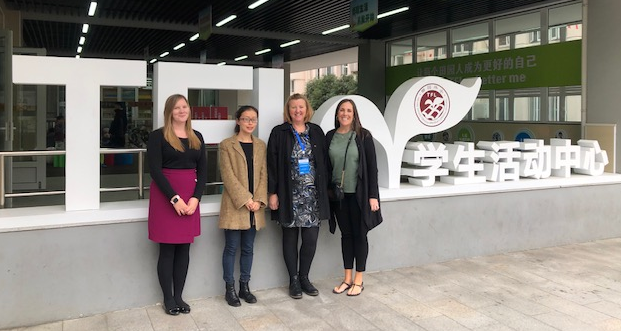by Katrina White, Jo Mills and Ruth Colenso (December 2019)
This is the second blog in a series about the recent trip that Ruth, Katie and Jo made to Shanghai, representing the Cambridge Maths Hub. This post focuses on three primary ideas.
Idea 1: Planning for a misconception and how to address it
In a Year 4 lesson students were asked to find how many lines of symmetry a rectangle, square, equilateral triangle and circle have. Students were given pre-cut shapes (manipulatives) and an answer sheet. Many students chose to not use the shapes. Some students made mistakes, but these were not addressed until the teacher went over the answers.
During the discussion about how many lines of symmetry appear on a non-square rectangle, the teacher identified the lines of symmetry one at a time. When the diagonal was chosen as a line of symmetry, she made the students fold a rectangle to see that it did not work. This was an example of students self-correcting their work.
On some occasions, teachers try to avoid misconceptions in case students subsequently remember the wrong answer. In this situation the pupils already had the misconception and they were given a concrete example to help them to correct it.
This image appears in the textbook. The statement under the circle explains that it has many lines of symmetry.
Idea 2: Relationship between 3,6 and 9 times tables.
By Grade 2 (Year 3), the children in Shanghai are fluent in their multiplication facts up to 9 x 9. We found this interesting, considering that we are teaching up to 12 x 12 by the end of Year 4. Their thinking is, like our thinking has been previously, that if you learn up to the ten times table you can use this knowledge to calculate any other multiplication fact (as long as you have a deep understanding of the relationships that are involved).
After Shanghai’s children are fluent with recalling multiplication facts, teaching moves on to expose the relationship between fact families with the ultimate goal of being able to use this knowledge to solve problems. For example, “My house number is a multiple of 3,6 and 9. The number is between 30 and 40. What is my house number?”
After the lesson, in a Teacher Research Group (TRG) discussion, we explained that while we do look at the relationship between the multiples in England, this is often to support children to learn seemingly harder multiplication facts (e.g. doubling a multiple of 3 to find a multiple of 6).
Idea 3: Classifying triangles
We observed a lesson in Grade 3 (Year 4) that focused on classifying triangles. After recapping the previous learning, that a triangle had 3 angles and 3 sides, and having already classified triangles using their angles, the children were given plenty of sticks (of 4 colours/lengths and with plastic joiners) to explore and make different triangles. After a few minutes of exploration, the teacher began to collect triangles in groups. She displayed them on the board in a very specific arrangement (equilateral followed by isosceles, with a space left for scalene triangles). The isosceles triangles were collected in such a way that the children were able to identify the missing triangles, based on the stick pattern that was missing from the display.
After collecting all triangles, the teacher asked the pupils to circle the isosceles triangles. This included the equilateral triangle because isosceles triangles are classified as having AT LEAST two equal sides. This generated discussion amongst the English teachers at the back of the room, as many primary teachers in England classifying triangles into 3 distinct groups (equilateral or isosceles or scalene). This lesson therefore exposed the equilateral triangle as a special type of isosceles triangle in the same way as we see a square as being a special type of rectangle. We referred back to the NCETM website and confirmed that this is also the case in the English curriculum, so it was interesting that not all of the English teachers were aware of this.
The layout of this collection of triangles allowed the pupils to come out and circle the triangles to create what we saw as a Venn diagram.
During the TRG after the lesson, we were able to share the NCETM resource referred to earlier with the Chinese teachers, which they found interesting and were keen to use in future to develop challenge activities. (Go NCETM!) It was great to be involved in such a collaborative discussion, with both groups of teachers learning from each other.
.








